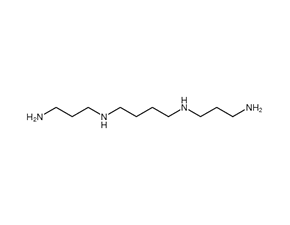
-
精胺
NMR and HPLC COA下载 MSDS下载 - Names:
Spermine
- CAS号:
71-44-3
MDL Number: MFCD00008215 - MF(分子式): C10H26N4 MW(分子量): 202.34
- EINECS:200-754-2 Reaxys Number:
- Pubchem ID: Brand:BIOFOUNT
| 货品编码 | 规格 | 纯度 | 价格 (¥) | 现价(¥) | 特价(¥) | 库存描述 | 数量 | 总计 (¥) |
|---|---|---|---|---|---|---|---|---|
| SS4110-5g | 5g | ≥ 97% | ¥ 969.00 | ¥ 969.00 | 3-5days | ¥ 0.00 | ||
| SS4110-1g | 1g | ≥ 97% | ¥ 278.00 | ¥ 278.00 | 3-5days | ¥ 0.00 |
| 中文别名 | 精胺(71-44-3,Spermine);精碱精素;肝胺;肌胺;精素;1,12-二氨基-4,9-二氮十二烷 |
| 英文别名 | Spermine(71-44-3);musculamine;neuridine;gerontine;Spermin |
| CAS号 | 71-44-3 |
| SMILES | C(CCNCCCN)CNCCCN |
| Inchi | InChI=1S/C10H26N4/c11-5-3-9-13-7-1-2-8-14-10-4-6-12/h13-14H,1-12H2 |
| InchiKey | PFNFFQXMRSDOHW-UHFFFAOYSA-N |
| 分子式 Molecular Weight | C10H26N4 |
| 分子量 Formula | 202.34 |
| 闪点 FP | |
| 熔点 Melting point | 28-30 °C |
| 沸点 Boiling point | 308.4±0.0 °C at 760 mmHg |
| Polarizability极化度 | 24.8±0.5 10-24cm3 |
| 密度 Density | 0.9±0.1 g/cm3 |
| 蒸汽压 Vapor Pressure | 0.0±0.6 mmHg at 25°C |
| 溶解度Solubility | H2O : 125 mg/mL (617.77 mM; Need ultrasonic) |
| 性状 | 白色至灰白色(<29°C固体,> 29°C液体) |
| 储藏条件 Storage conditions | 4°C,密封储存,远离潮湿和阳光 |
精胺(71-44-3,Spermine)的毒理属性测试:
| 生物 | 测试类型 | 路线 | 报告剂量(标准化剂量) | 影响 | 参考 |
|---|---|---|---|---|---|
| rat | LD50 | intraperitoneal | 33 mg/kg (33 mg/kg) | LUNGS, THORAX, OR RESPIRATION: OTHER CHANGES; KIDNEY, URETER, AND BLADDER: CHANGES IN TUBULES (INCLUDING ACUTE RENAL FAILURE, ACUTE TUBULAR NECROSIS) | Toxicology and Applied Pharmacology., 88(433), 1987 [PMID:3576625] |
| rat | LD50 | intravenous | 65 mg/kg (65 mg/kg) | BEHAVIORAL: CONVULSIONS OR EFFECT ON SEIZURE THRESHOLD; BEHAVIORAL: CHANGES IN MOTOR ACTIVITY (SPECIFIC ASSAY); LUNGS, THORAX, OR RESPIRATION: DYSPNEA | Archives Internationales de Pharmacodynamie et de Therapie., 165(374), 1967 [PMID:6031471] |
| mouse | LDLo | intraperitoneal | 8 mg/kg (8 mg/kg) | Toxicology and Applied Pharmacology., 23(288), 1972 [PMID:5074577] | |
| mouse | LD50 | intravenous | 56 mg/kg (56 mg/kg) | U.S. Army Armament Research & Development Command, Chemical Systems Laboratory, NIOSH Exchange Chemicals., NX#00641 | |
| mouse | LD30 | oral | 650 mg/kg (650 mg/kg) | BEHAVIORAL: SOMNOLENCE (GENERAL DEPRESSED ACTIVITY); BEHAVIORAL: CONVULSIONS OR EFFECT ON SEIZURE THRESHOLD | Agents and Actions, A Swiss Journal of Pharmacology., 14(228), 1984 [PMID:6324559] |
精胺(71-44-3,Spermine)实验注意事项:
1.使用71-44-3实验前需戴好防护眼镜,穿戴防护服和口罩,佩戴手套,避免与皮肤接触。
2.使用71-44-3实验过程中如遇到有毒或者刺激性物质及有害物质产生,必要时实验操作需要手套箱内完成以免对实验人员造成伤害。
3.取样品71-44-3的移液枪头需及时更换,必要时为避免交叉污染尽可能选择滤芯吸头。
4.称量药品时选用称量纸,并无风处取药和称量以免扬撒,试剂的容器使用前务必确保干净,并消毒。
5.取药品71-44-3时尽量采用多个药勺分别使用,使用后清洗干净。
6.实验后产生的废弃物需分类存储,并交于专业生物废气物处理公司处理,以免造成环境污染。
大规格定制:定制产品请将信息发送至sales@bio-fount.com。
Spermine(71-44-3) Experimental considerations:
1. Wear protective glasses, protective clothing and masks, gloves, and avoid contact with the skin during the experiment.
2. The waste generated after the experiment needs to be stored separately, and handed over to a professional biological waste gas treatment company to avoid environmental pollution.
Tag:精胺(71-44-3,Spermine),精胺试剂,精胺的纯度,精胺的作用,精胺的外观,精胺的生产厂家,精胺的溶解度,精胺的注意事项,精胺的MSDS,精胺的储存条件,精胺的熔点,精胺的价格,精胺的用途,精胺的分子式
| 产品说明 | 精胺(71-44-3,Spermine)是由亚精胺形成的生物多胺,几乎存在于所有组织中。71-44-3的熔点,71-44-3的其他参数见主页 |
| Introduction | Spermine (71-44-3,精胺) is a biological polyamine formed by spermidine, which exists in almost all tissues. The melting point of 71-44-3 and other parameters of 71-44-3 can be found on the homepage |
| Application1 | 精胺对于赘生性和正常组织的生长都是必不可少的,并且参与钙依赖性免疫过程的调节。 |
| Application2 | 精胺结合并激活NMDA,并且已经显示出以浓度依赖性方式增强NMDA诱导的电流。 |
| Application3 | 精胺是GluR抑制剂。 |
| 警示图 | |
| 危险性 | |
| 危险性警示 | Not Available |
| 安全声明 | H303吞入可能有害+H313皮肤接触可能有害+H333吸入可能对身体有害 |
| 安全防护 | P264处理后彻底清洗+P280戴防护手套/穿防护服/戴防护眼罩/戴防护面具+P305如果进入眼睛+P351用水小心冲洗几分钟+P338取出隐形眼镜(如果有)并且易于操作,继续冲洗+P337如果眼睛刺激持续+P313获得医疗建议/护理 |
| 备注 | 避免吸入,误食以及与皮肤接触 |
| 象形图 |  |
|---|---|
| 信号 | Danger |
| GHS危险说明 |
Aggregated GHS information provided by 200 companies from 4 notifications to the ECHA C&L Inventory. Each notification may be associated with multiple companies. H314 (100%): Causes severe skin burns and eye damage [Danger Skin corrosion/irritation] H318 (77.5%): Causes serious eye damage [Danger Serious eye damage/eye irritation] Information may vary between notifications depending on impurities, additives, and other factors. The percentage value in parenthesis indicates the notified classification ratio from companies that provide hazard codes. Only hazard codes with percentage values above 10% are shown. |
| 防范说明代码 |
P260, P264, P280, P301+P330+P331, P303+P361+P353, P304+P340, P305+P351+P338, P310, P321, P363, P405, and P501 (The corresponding statement to each P-code can be found at the GHS Classification page.) |
| Spermine and oxacillin stress response on the cell wall synthesis and the global gene expression analysis in Methicillin-resistance Staphylococcus aureus(Genes & Genomics,2018) |
| Inhibition of Cation Channels in Human Erythrocytes by Spermine(The Journal of Membrane Biology,2010) |
| Spermine enhances IgM productivity of human-human hybridoma HB4C5 cells and human peripheral blood lymphocytes(Cytotechnology,1998) |
| External spermine prevents UVA-induced damage of Synechocystis sp. PCC 6803 via increased catalase activity and decreased H2O2 and malonaldehyde levels(Annals of Microbiology,2018) |
| Increased blood spermine levels decrease the cytotoxic activity of lymphokine-activated killer cells: a novel mechanism of cancer evasion(Cancer Immunology, Immunotherapy,2006) |
1.A novel role for antizyme inhibitor 2 as a regulator of serotonin and histamine biosynthesis and content in mouse mast cells.
Acosta-Andrade C1, Lambertos A2, Urdiales JL1, Sánchez-Jiménez F1, Peñafiel R2,3, Fajardo I4. Amino Acids. 2016 Apr 15. [Epub ahead of print]
Antizymes and antizyme inhibitors are key regulatory proteins of polyamine levels by affecting ornithine decarboxylase and polyamine uptake. Our previous studies indicated a metabolic interplay among polyamines, histamine and serotonin in mast cells, and demonstrated that polyamines are present in mast cell secretory granules, being important for histamine storage and serotonin levels. Recently, the novel antizyme inhibitor-2 (AZIN2) was proposed as a local regulator of polyamine biosynthesis in association with mast cell serotonin-containing granules. To gain insight into the role of AZIN2 in the biosynthesis and storage of serotonin and histamine, we have generated bone marrow derived mast cells (BMMCs) from both wild-type and transgenic Azin2 hypomorphic mice, and have analyzed polyamines, serotonin and histamine contents, and some elements of their metabolisms. Azin2 hypomorphic BMMCs did not show major mast cell phenotypic alterations as judged by morphology and specific mast cell proteases.
2.Structural Investigations of N-carbamoylputrescine Amidohydrolase from Medicago truncatula: Insights into the Ultimate Step of Putrescine Biosynthesis in Plants.
Sekula B1, Ruszkowski M2, Malinska M3, Dauter Z2. Front Plant Sci. 2016 Mar 30;7:350. doi: 10.3389/fpls.2016.00350. eCollection 2016.
Putrescine, 1,4-diaminobutane, is an intermediate in the biosynthesis of more complexed polyamines, spermidine and spermine. Unlike other eukaryotes, plants have evolved a multistep pathway for putrescine biosynthesis that utilizes arginine. In the final reaction, N-carbamoylputrescine is hydrolyzed to putrescine by N-carbamoylputrescine amidohydrolase (CPA, EC 3.5.1.53). During the hydrolysis, consecutive nucleophilic attacks on the substrate by Cys158 and water lead to formation of putrescine and two by-products, ammonia and carbon dioxide. CPA from the model legume plant, Medicago truncatula (MtCPA), was investigated in this work. Four crystal structures were determined: the wild-type MtCPA in complex with the reaction intermediate, N-(dihydroxymethyl)putrescine as well as with cadaverine, which is a longer analog of putrescine; and also structures of MtCPA-C158S mutant unliganded and with putrescine. MtCPA assembles into octamers, which resemble an incomplete left-handed helical twist.
3.Isoptericola cucumis sp. nov., isolated from the root tissue of cucumber (Cucumis sativus).
Kämpfer P1, Glaeser SP2, Kloepper JW3, Hu CH4, McInroy JA5, Martin K6, Busse HJ7. Int J Syst Evol Microbiol. 2016 Apr 5. doi: 10.1099/ijsem.0.001055. [Epub ahead of print]
A Gram-positive, aerobic organism, showing an irregular cell morphology was isolated from the root tissue of cucumber (Cucumis sativus) and investigated in detail for its taxonomic position. On the basis of the 16S rRNA gene sequence analysis strain AP-38T was shown to be most closely related to Isoptericola variablis (99.1%), and Isoptericola nanjingensis (98.9%). The 16S rRNA gene sequence similarity to all other Isoptericola species was ≤ 98.5 %. DNA-DNA similarities to Isoptericola variablis DSM 10177T and Isoptericola nanjingensis DSM 24300T were 31%/41% (reciprocal) and 34%/34% (reciprocal), respectively. The diagnostic diaminoacid of the peptidoglycan was L-lysine.The quinone system contained predominantly menaquinones MK-9(H4) and MK-9(H2). In the polar lipid profile major compounds were diphosphatidylglycerol, phosphatidylglycerol, phosphatidylinositol and two phosphatidylinositol-mannosides. The polyamine pattern contained the major components spermidine and spermine and significant amounts of tyramine.
4.Quality Changes and Biogenic Amines Accumulation of Black Carp (Mylopharyngodon piceus) Fillets Stored at Different Temperatures.
Fan H1, Liu X1, Hong H1, Shen S1, Xu Q1, Feng L1, Luo Y2. J Food Prot. 2016 Apr;79(4):635-45. doi: 10.4315/0362-028X.JFP-15-373.
Postmortem quality changes of black carp (Mylopharyngodon piceus) fillets stored at 20, 4, and 0°C (in ice) were determined in terms of pH value, K value, total volatile basic nitrogen, free amino acids, biogenic amines, drip loss, electrical conductivity (EC), sensory score, and microbial growth. The results showed that black carp fillets could maintain a good quality for 2, 9, and 12 days when stored at 20, 4, and 0°C, respectively. Pseudomonads, Aeromonas, and Enterobacteriaceae were the main spoilage bacteria in black carp. Tryptamine, 2-phenylethylamine, putrescine, cadaverine, and tyramine increased significantly (P < 0.05) during storage at the three temperatures, but not spermidine and spermine, among which tyramine and putrescine were the main biogenic amines in black carp fillets. A significantly higher concentration of histamine (132.05 mg/kg on the third day) was detected in the samples stored at 20°C (P < 0.01) than at 4 and 0°C
- 相关产品
-
< >
- 推荐产品
-
< >
- 最新产品
-
< >
新闻
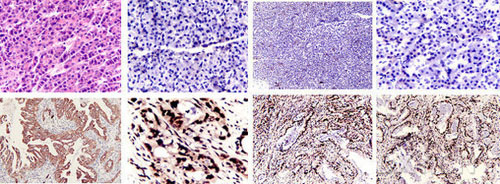
怎么做细胞爬片免疫组化染色实验
细胞爬片免疫组化染色,是通过细胞爬片是让玻片浸在细胞培养基内,细胞在玻片上生长,主要用于组织学,免疫组织化学...
2020/7/20 22:04:33
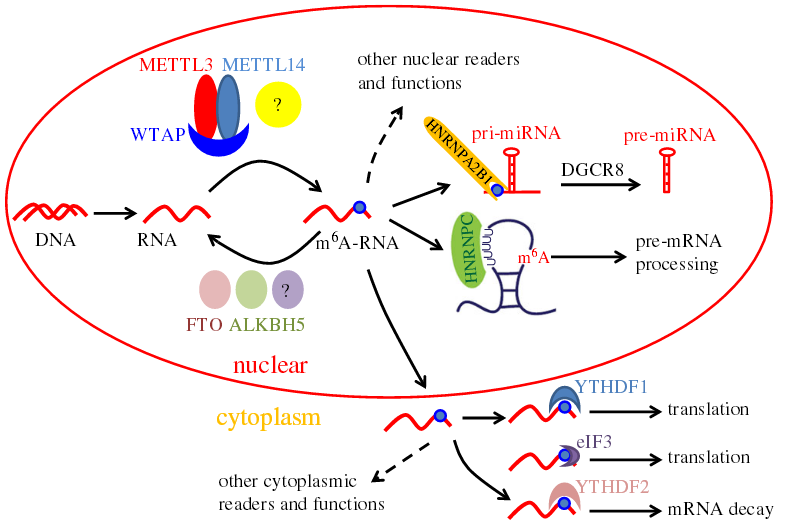
提取病毒RNA的实验方法
提取病毒RNA方法分别有:异硫氰酸胍的提取病毒RNA方法、TRIzol LS提取法、Trizol法提取法等等...
2020/7/22 20:29:26
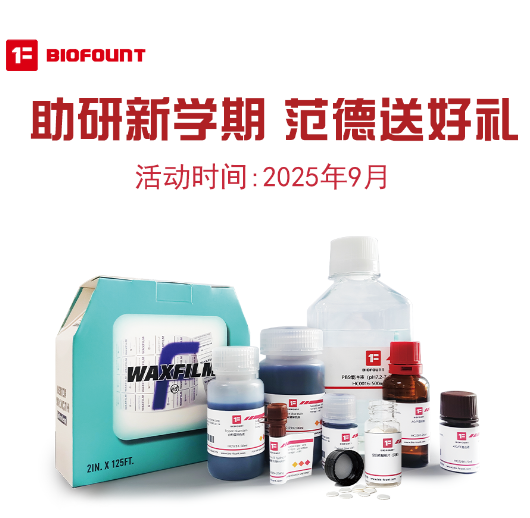
9月开学季——助研新学期 范德送好礼
2025/8/28 15:30:55

Waxfilm 实验室封口膜:技术与国际市场的双重突破
在实验室耗材领域,封口膜是保障实验准确性与稳定性的关键产品之一。近年来,Waxfilm?实验室封口膜凭借其卓...
2025/5/13 13:03:40
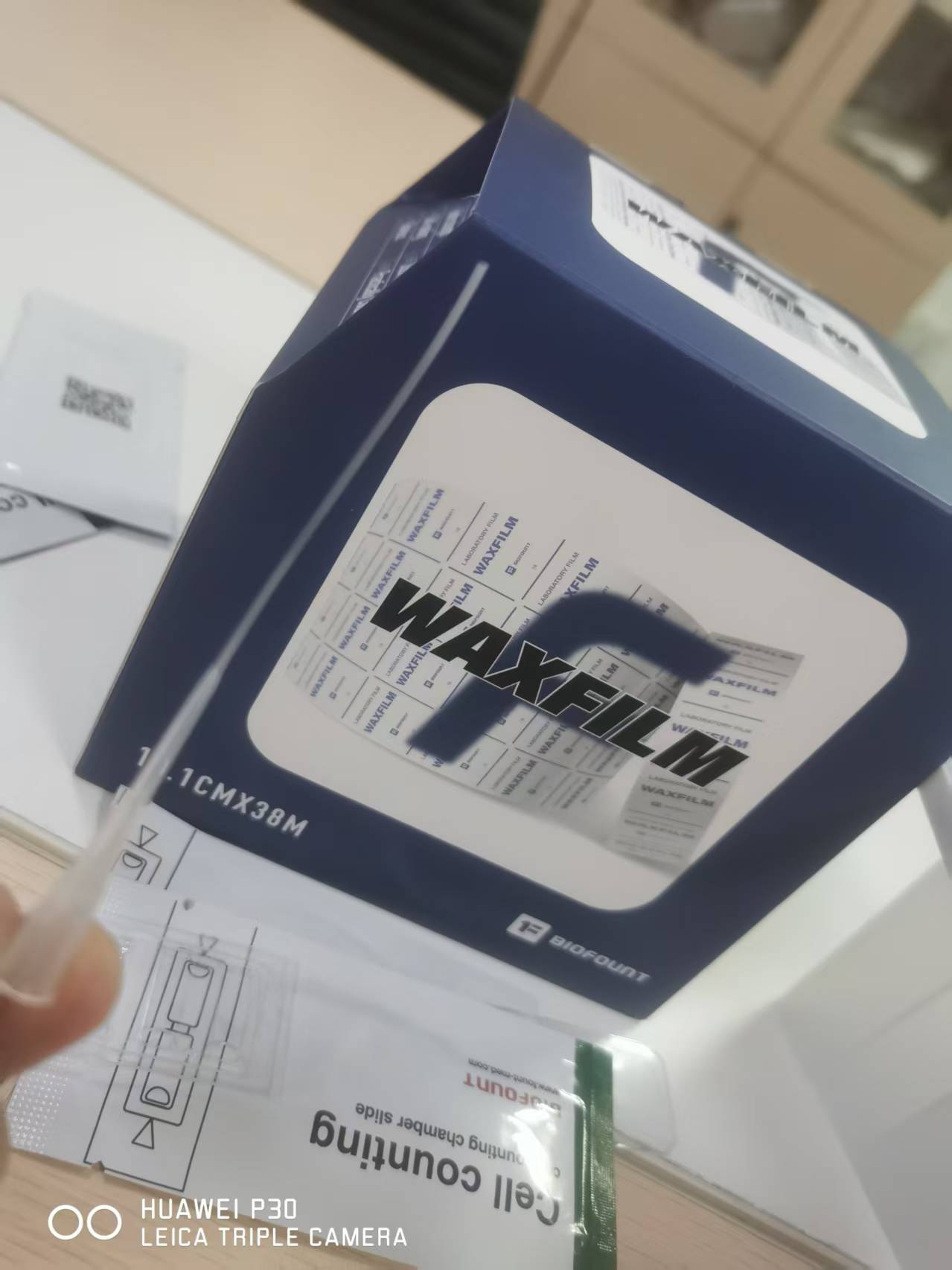
Waxfilm实验室封口膜的5大突破
Waxfilm实验室封口膜作为生物功能膜领域的国产技术突破和品牌突破,是生物领域中国技术发展的缩影。
2025/5/6 17:02:07
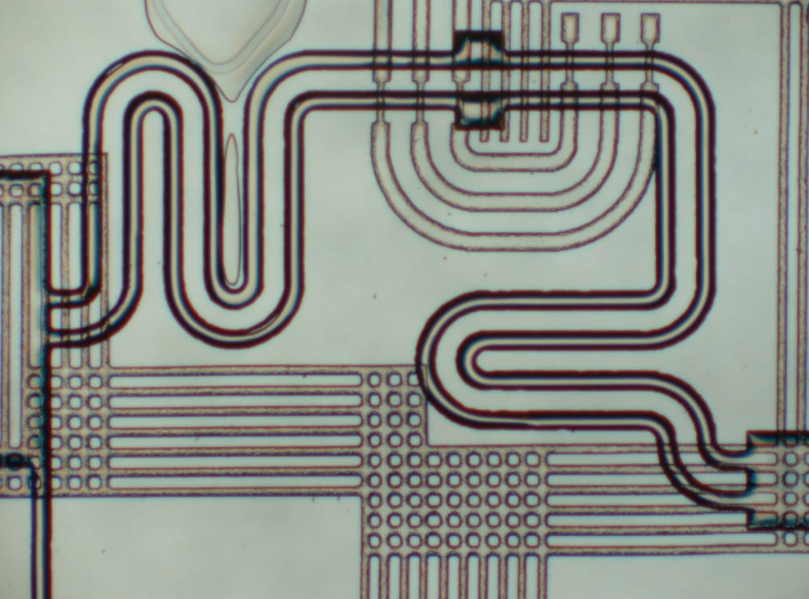
各种微流控芯片键合方法的优缺点
微流控芯片键合:目前主要有激光焊接、热压键合、胶键合、超音波焊接,每种方法都有各自的优缺点。本文主要介绍聚酯...
2023/7/28 10:43:09
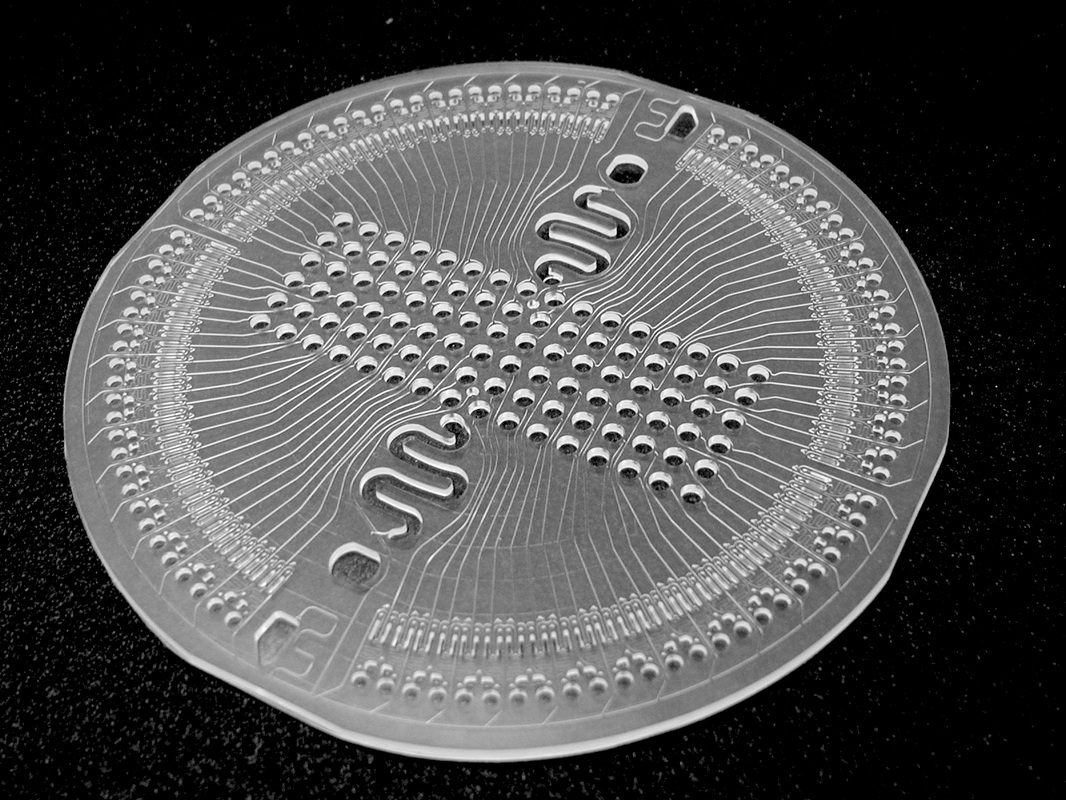
新一代微流控键合解决方案
微流控键合解决方案:微流控芯片制造的一个重要环节,也是最容易被忽视的--芯片键合。其中一个重要因素是:微流控...
2023/7/27 12:44:28
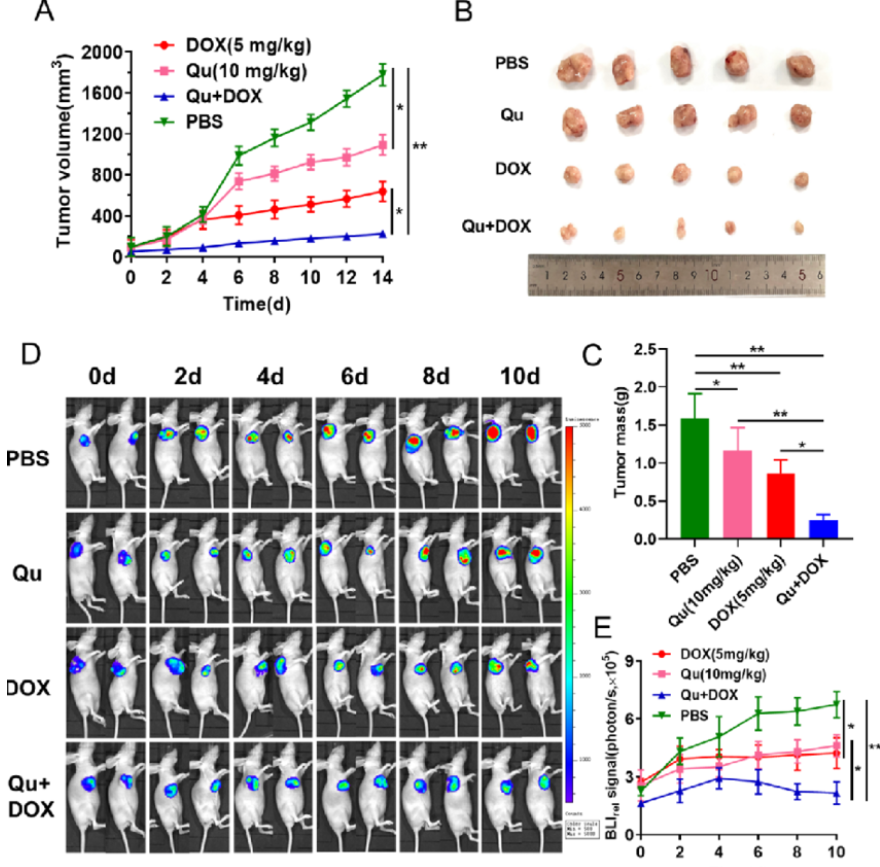
荧光素钾盐使用说明
D-荧光素钾盐(K+)设计用于体外和体内生物发光测定。D-荧光素的质量和纯度对于获得良好和可重复的结果至关重...
2023/7/20 11:05:11
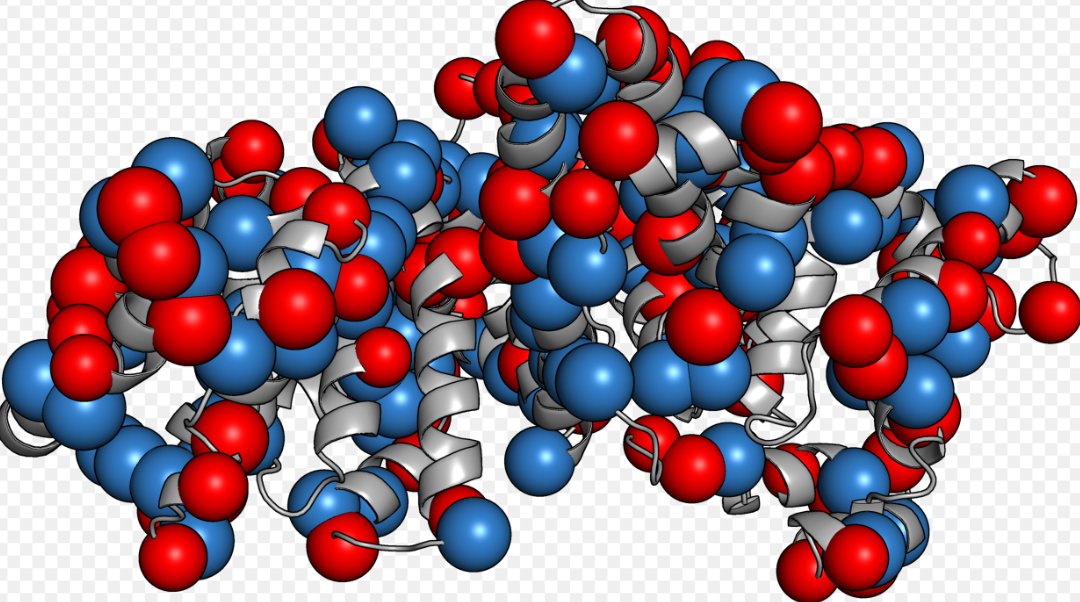
如何选BSA(牛血清白蛋白)
如何选BSA(牛血清白蛋白):牛血清白蛋白(BSA)有多种形式,如何选择适合自己的牛血清白蛋白(BSA)是一...
2023/2/14 13:09:18
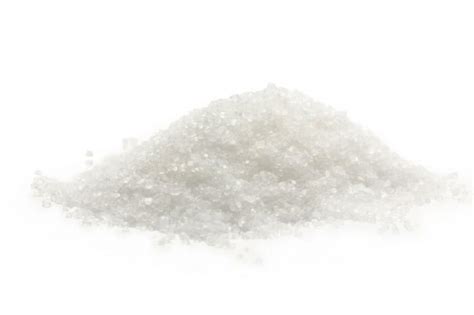
牛血清白蛋白(BSA)常见问题
牛血清白蛋白(BSA)常见问题:牛血清白蛋白(BSA)在实验室中是通用的,可用于蛋白质印迹、细胞组织培养、P...
2022/10/19 9:39:51




 购物车
购物车 



